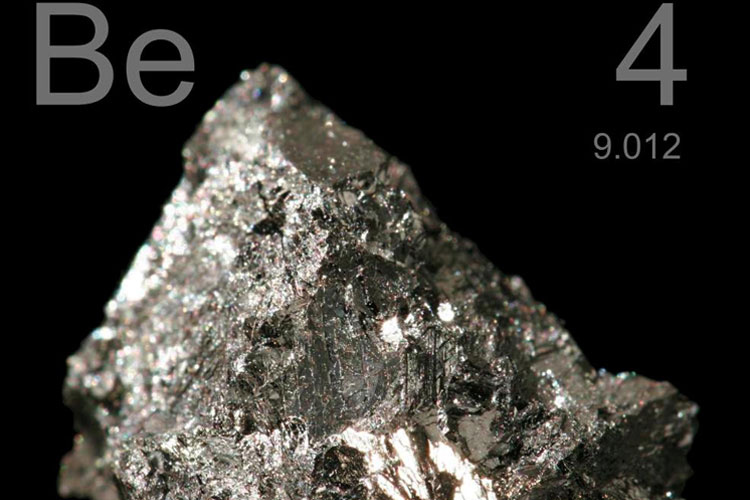What are the Hazards of Beryllium Dust? Toxic metals, including "heavy metals," are individual metals and metal compounds that negatively affect people's health. Some toxic, semi-metallic elements, including arsenic and selenium, are discussed in this page. In very small amounts, many of these metals are necessary to support life. However, in larger amounts, they become toxic. They may build up in biological systems and become a significant health hazard. This page provides a starting point for technical and regulatory information about toxic metals.
The element beryllium is a grey metal that is stronger than steel and lighter than aluminum. Its physical properties of great strength-to-weight, high melting point, excellent thermal stability and conductivity, reflectivity, and transparency to X-rays make it an essential material in the aerospace, telecommunications, defense, computer, medical, and nuclear industries. Beryllium is classified as a strategic and critical material by the U.S. Department of Defense.
Beryllium is used industrially in three forms: as a pure metal, as beryllium oxide, and most commonly, as an alloy with copper, aluminum, magnesium, or nickel. Beryllium oxide (called beryllia) is known for its high heat capacity and is an important component of certain sensitive electronic equipment. Beryllium alloys are classified into two types: high beryllium content (up to 30% beryllium) and low beryllium content (2 - 3% beryllium). Copper-beryllium alloy is commonly used to make bushings, bearings, and springs.
Workers in industries where beryllium is processed may be exposed to beryllium by inhaling or contacting beryllium in the air or on surfaces. Inhaling or contacting beryllium can cause an immune response that results in an individual becoming sensitized to beryllium. Individuals with beryllium sensitization can develop a debilitating disease of the lungs called chronic beryllium disease (CBD) if they inhale airborne beryllium after becoming sensitized. Beryllium-exposed workers may also develop other adverse health effects such as acute beryllium disease, and lung cancer.
Suggested Industrial Vacuums for Beryllium Dust Recovery
PrestiVac HEPAPlus* Vacuums are specifically designed to safely vacuum toxic dusts. Equipped with a Certified Absolute HEPAPlus*filter with an efficiency of 99.995% on 0.2 micron so there is no risk of exposure or contamination for the operator or the environment. These vacuums are tested for absolute filtration. Testing Method: IEST RP-CC034.3. H14. MIL-STD 282 / A.S.T.M. - D2986-91. MPPS method EN 1822.
Which Industries are at Risk with Beryllium Dust?













